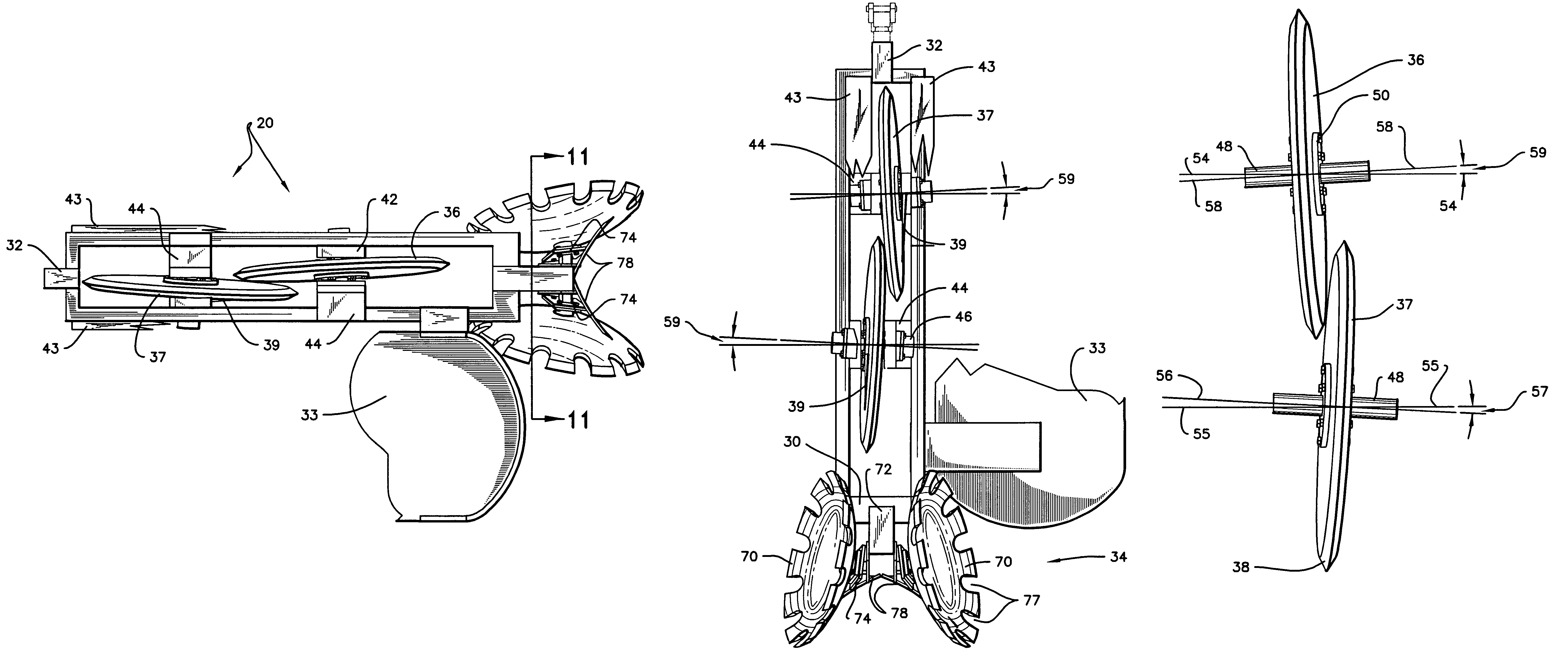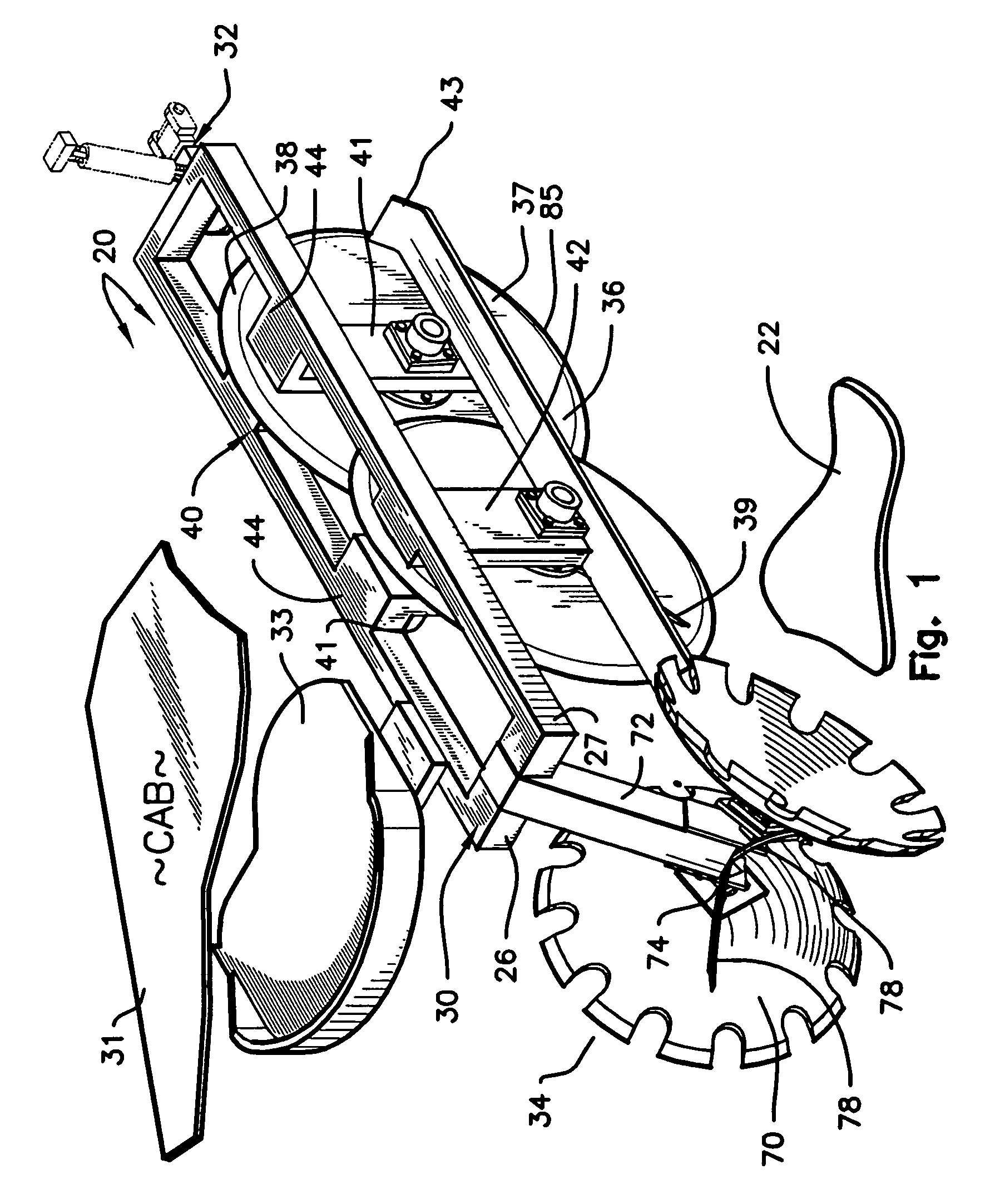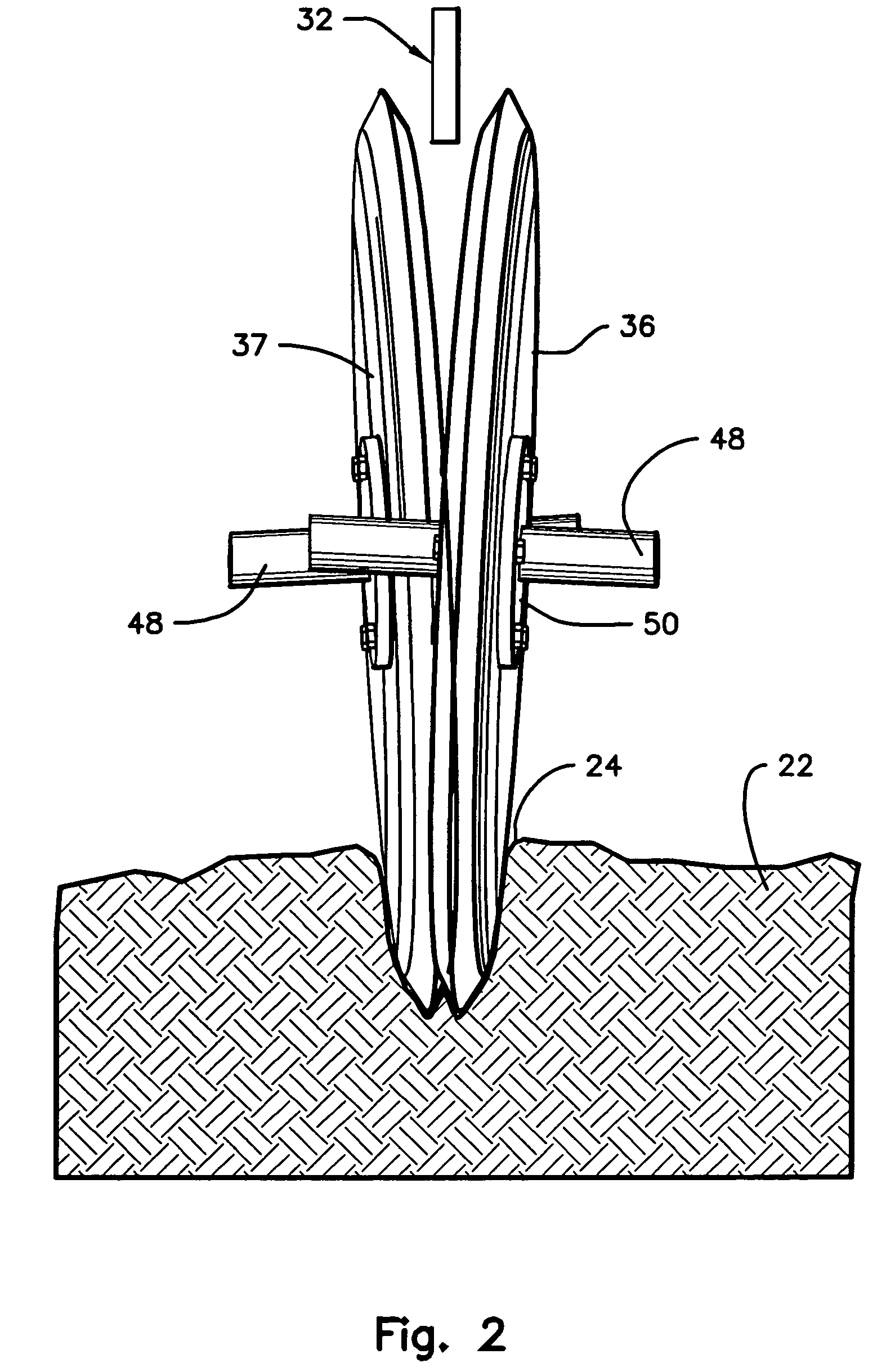Seedling planter
a transplanter and seedling technology, applied in potato planters, furrow making/covering, agriculture tools and machines, etc., can solve the problems of affecting the operation of the planter, fixed coulter, rigidly mounted coulter, etc., and achieve the effect of improving the seedling planting process
- Summary
- Abstract
- Description
- Claims
- Application Information
AI Technical Summary
Benefits of technology
Problems solved by technology
Method used
Image
Examples
Embodiment Construction
[0030]With reference directed now to the appended drawings, my new heavy-duty seedling planter (i.e., transplanter) has been generally designated by the reference numeral 20. Planter 20 is adapted to be towed over field 22 (FIGS. 2, 3) to cut a furrow 24 (FIG. 2) that is suitably shaped to receive and reliably grow a plurality of tree seedlings 26 (FIG. 3). The construction disclosed not only provides a properly shaped furrow 24 that provides the desired seedbed, but in addition, a pair of smaller, shallower and parallel trenches 28, 29 formed by the trailing apparatus provide enhanced irrigation and moisture to insure reliable plant growth.
[0031]Planter 20 is capable of planting numerous types of seedlings. It may be used with hardwood, pine and similar bare-root seedlings in all types of conditions from wet, heavy clay conditions to applications over dry, loamy soils. However, the hereinafter described structure is particularly adept at handling moist, muddy clay soils that tend t...
PUM
 Login to View More
Login to View More Abstract
Description
Claims
Application Information
 Login to View More
Login to View More - R&D
- Intellectual Property
- Life Sciences
- Materials
- Tech Scout
- Unparalleled Data Quality
- Higher Quality Content
- 60% Fewer Hallucinations
Browse by: Latest US Patents, China's latest patents, Technical Efficacy Thesaurus, Application Domain, Technology Topic, Popular Technical Reports.
© 2025 PatSnap. All rights reserved.Legal|Privacy policy|Modern Slavery Act Transparency Statement|Sitemap|About US| Contact US: help@patsnap.com



